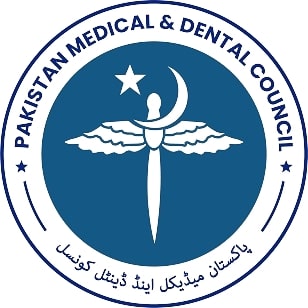Modified Chevron osteotomy for treatment of Hallux valgus
DOI:
https://doi.org/10.59058/jaimc.v21i1.93Keywords:
Hallux valgus, modified chevron osteotomy, inter-metatarsal angle (IMA), Hallux valgus angle (HV).Abstract
Background And Objective: Hallux valgus is the most common forefoot deformity in adults, especially in females. Almost 150 different procedures have been described for the treatment of Hallux valgus deformity. Modified distal metatarsal Chevron osteotomy with distal soft tissue release is one of the most effective procedures for the correction of mild to moderate Hallux valgus deformity.
Methods: This is a prospective observational study conducted at Department of Orthopedic Surgery Services hospital Lahore from Jan 2018 to Jan 2019 After Taking permission from the hospital ethical review board, this prospective observational study was carried out at the Services institute of medical sciences Lahore. A total number of 20 patients of age between 25-65 years were included in the study. There were 16 females and 4 males with four patients having mild while 16 patients had moderate Hallux valgus.Written consent was obtained from each patient.Each patient underwent dorsoplantar and lateral views in weight-bearing position including Axial Sesamoid view of the foot. On x-rays we measured the Hallux valgus angle(HV), inter-metatarsal (IMA) while clinically each patient was assessed for American orthopedic foot and ankle society score(AOFAS) pre-operatively.In all these patients we performed the Modified chevron osteotomy with lateral soft tissue release and medial eminence excision with capsular repair.Post-operative follow-up was done at two weeks, six weeks, 3 months and at one year. And each follow-up of these patients were assessed radiologically for HV angle and IMA.Clinically each patient was assessed for AOFAS score.
Results:
Total no of patients enrolled in our study were 20 with 16 females and 4 males. The age range was 25-65 years(37.5). Four patients had mild Hallux valgus while 16 patient had moderate Hallux valgus.Pre-operative mean AOFAS score was 56.50 ± 3.54 with a range of 50-70. Six patients had B/L Hallux valgus deformity. Thus a total no. of 23 feet in 20 patient underwent Modified Chevron osteotomy with distal soft tissue release. Before surgery the mean HV angle was 31.52°±6.44° with a range of 20°-40° while mean IMA was 18°±1.10° with range of 12°-20°.The AOFOS score improve from 56.50±3.54 pre-operatively to 85.95±6.15 with range of 75-98 after 06 weeks post-operatively and remained static at 03 months and after 06 months post-operatively.It further Improve to 94±1.25 after 01 year at the final follow up.The mean HV angle was improve from 31.52°±6.44° pre-operatively to 6.4°±1° after 06 weeks with a range of 4°-8° and6.42°±1° after 01 year with a range of 4°-7° post operatively.The mean IMA improved from 18±1.10 pre-operatively to 5.4±1.30 with range of 4°-8° after 06 weeks post-operatively and 5.6°±1.1° with the range of 4°-8° at the end of 01 year.The osteotomy union time was 10-16 weeks after the surgery.There was no recurrence of the deformity, Infection, stiffness of the joint and avascular necrosis of metatarsal head noted post-operatively at the end of one year. First metatarsal shortening was 4-6 mm (mean 3.6±1.2mm) at the final follow up.
Conclusion:
Modified chevron osteotomy with distal soft tissue release is a good procedure for correction of mild to moderate Hallux valgus. It allows a significant lateral displacement of distal fragment (4.5mm). This osteotomy improves the foot biomechanics, has got durable functional and cosmetic result.The patient satisfaction was also good (90.5%).
Downloads
Published
How to Cite
Issue
Section
License
Copyright (c) 2023 Tanveer Haider, Muhammad Zafar Iqbal Shahid, Muhammad Khalid, Muhammad Siddique Hamid, Muhmmad Khalid Syed, Asim Islam

This work is licensed under a Creative Commons Attribution 4.0 International License.
The articles published in this journal come under creative commons licence Attribution 4.0 International (CC BY 4.0) which allows to copy and redistribute the material in any medium or format Adapt — remix, transform, and build upon the material for any purpose, even commercially under following terms.
-
Attribution — You must give appropriate credit, provide a link to the license, and indicate if changes were made. You may do so in any reasonable manner, but not in any way that suggests the licensor endorses you or your use.
- No additional restrictions — You may not apply legal terms or technological measures that legally restrict others from doing anything the license permits.
The editorial board of the Journal strives hard for the authenticity and accuracy of the material published in the Journal. However, findings and statements are views of the authors and do not necessarily represent views of the Editorial Board. Many software like (Google Maps, Google Earth, Biorender (free version)) restricts the free distribution of materials prepared using these softwares. Therefore, authors are strongly advised to check the license/copyright information of the software used to prepare maps/images. In case of publication of copyright material, the correction will be published in one of the subsequent issues of the Journal, and the authors will bear the printing cost.









